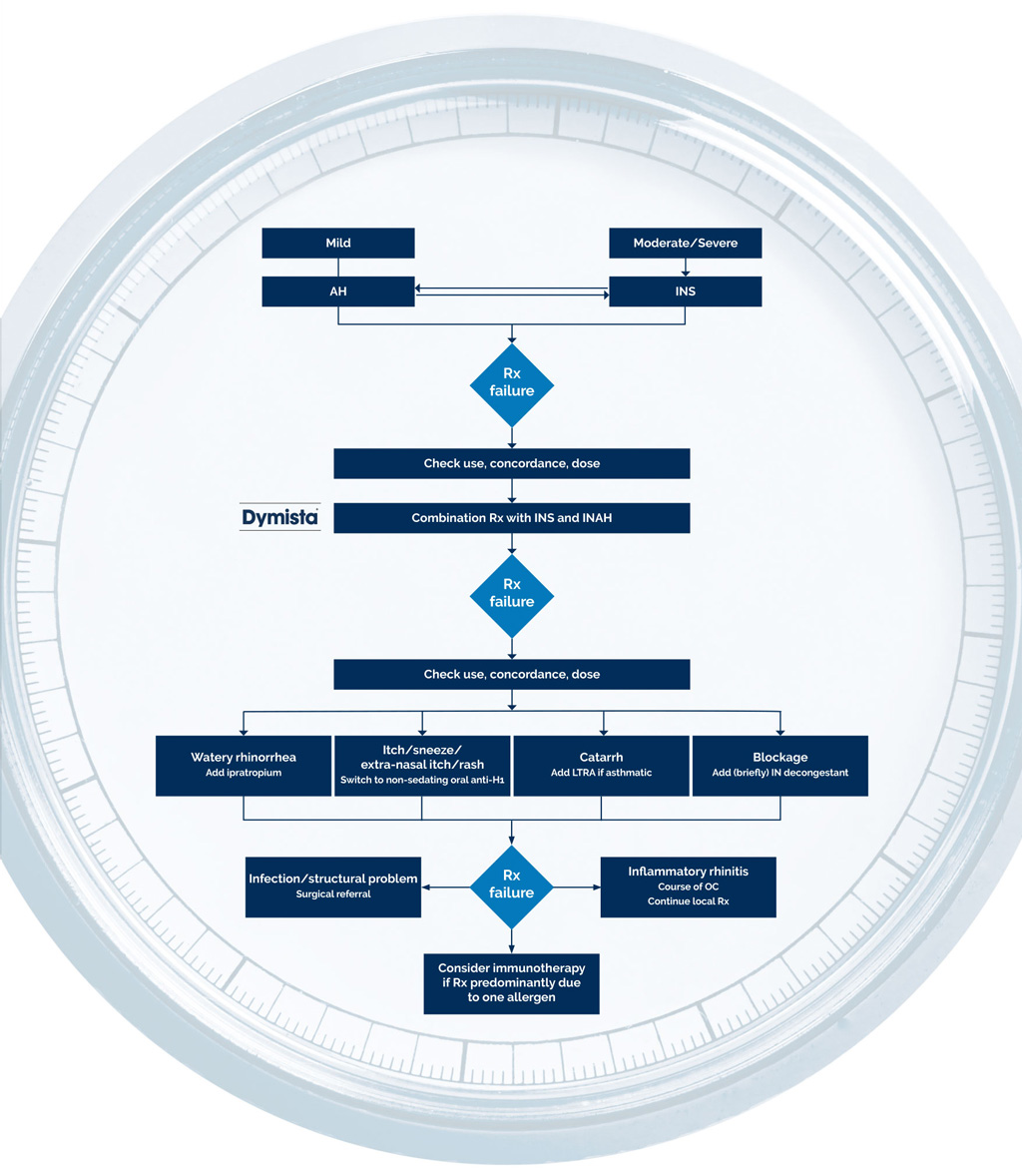British Society of Allergy and Clinical Immunology (BSACI)
Dymista® is included in the BSACI guidelines on the diagnosis and management of allergic and non-allergic rhinitis. The BSACI guidelines have been accredited from NICE and the accreditation is valid until 30 January 20231
These guidelines represent the primary clinical recommendations for the treatment of allergic rhinitis in the UK. They were compiled by committee members, experts and reviewers in consultation with all BSACI members. Recommendations are evidence graded, and where evidence was lacking, a consensus was reached among the experts on the committee.
The draft guidelines were amended by the Standards of Care Committee (SOCC), according to a NICE-accredited process.
13.2 INS and topical H1-antihistamine combination1
- Dymista® leads to greater symptom improvement than using either agent alone in seasonal allergic rhinitis (SAR) (Grade A).
- The combination approach leads to clinical improvement of symptoms days earlier than seen with azelastine or fluticasone propionate monotherapy.
- Ocular symptoms of allergy were better treated with the combination spray rather than fluticasone propionate or azelastine alone.
- Efficacy over fluticasone propionate is demonstrated in perennial allergic rhinitis (PAR).
13.4 Place in therapy1
Combination of topical antihistamine (AH) with intranasal corticosteroids (INS) (Dymista®) should be used in patients when symptoms remain uncontrolled on AH or INS monotherapy or on a combination of oral AH plus INS.
The use of Dymista® is included in the BSACI treatment guidelines for allergic rhinitis
.1

IN: intranasal; OC: oral corticosteroids; AH: antihistamine; LTRA: leukotriene receptor antagonist
Additional therapies can be accomplished using two different medications, or a combination treatment in one device. There is, as yet, no comparative evidence on which to base this choice; however, concordance appears more likely when the regime is simple.
Adapted from Scadding, et al. 2017.1
Viatris Connect is an online platform for UK health Professionals.
Across the website you will find news, blogs and product information.
Register to Viatris Connect today
Please note that the website contains promotional and non-promotional material including educational content and resources to help you and your patients.
REGISTER NOW


